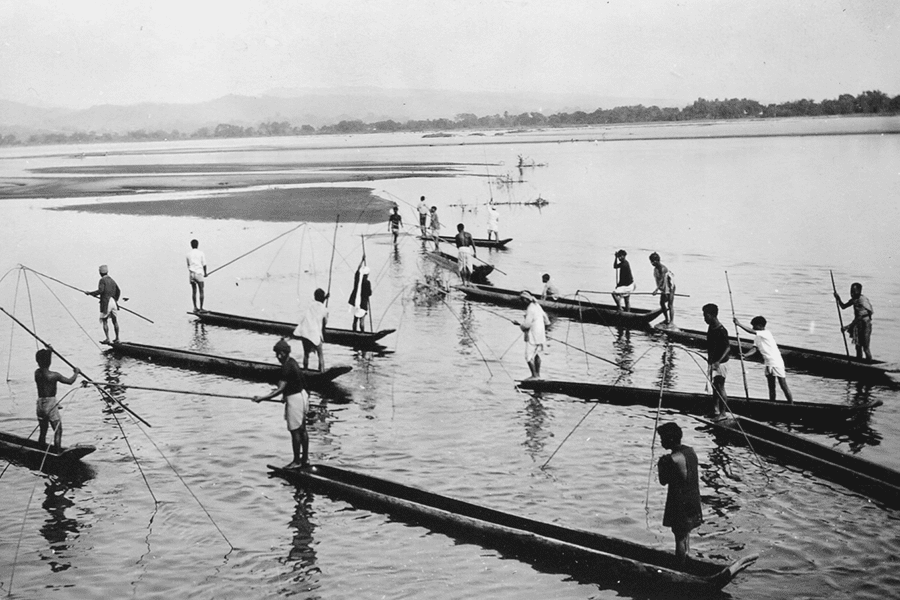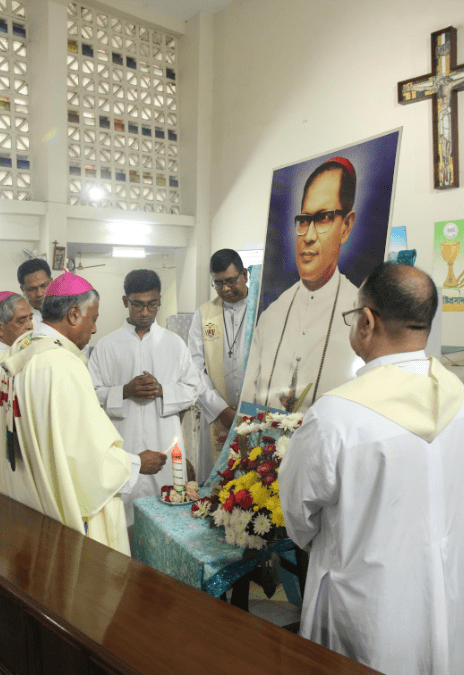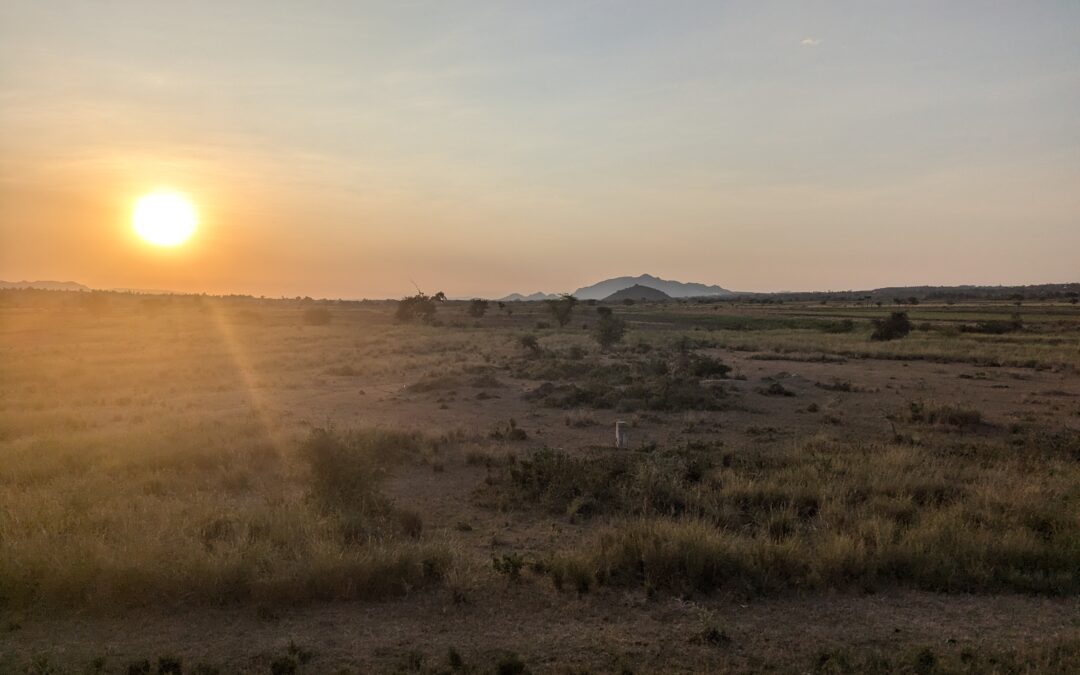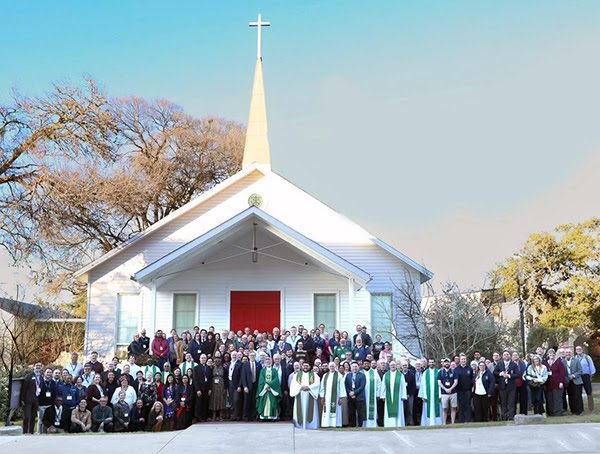While sifting through official letters and various records concerning the formation of the Bengal Foreign Mission Society in the Province Archives near Notre Dame’s campus, I came across an educational paper of sorts that caught my attention. The title reads, in all caps:
ORIENTATING THE BROTHERS OF HOLY CROSS WHO ARE COMING TO TEACH IN EAST PAKISTAN
FOR THE FIRST TIME FROM THE UNITED STATES OF AMERICA
The author’s name has been blacked out, and there is no date of publication on the eight page document, but the curious record claims on its title page to be “in partial fulfillment” of educational requirements at Loyola University in 1965-66.
As I began reading the first paragraph of this paper, whose self-proclaimed purpose is “to supply a bulk of information to newcomers which normally would be acquired vicariously over a long period of time,” a new world seemed to open up before me—new in the sense that it is different, perhaps not existing in the same way anymore.
“Arriving in Dacca by plane, your first impressions will be of the heat and the modern look of the airport.” It is hard for me, as an American college student accustomed to the sleek designs of the twenty-first century, to imagine what modern looked like halfway around the world in the 1960s. But the world that these newcomers encountered becomes clearer as I continue reading.
“As you travel across the railroad the streets will become eight feet wide lanes having open drains on each side. The buildings come right out to the pavement and are rarely more than two storeys high.” Boys and men are described based on what they wear, and “most of them are barefooted.” But “women are rarely seen on the streets.”
After describing what the missionaries will encounter in their first days in the city, the paper depicts the journey that the men will take “to a village twenty-five miles away” by way of meandering roads that follow the rivers “through the Ganges-Bramaputra delta that forms East Pakistan,” now Bangladesh.
As the missionaries proceed deeper into the countryside, the houses become two-room structures that “have walls of woven reed and grass roofs that are gradually being replaced with tin.” These are the living conditions of the missionaries’ neighbors, a far cry from the stately buildings of Washington D.C. that surrounded the Foreign Mission Seminary where the priests were educated and formed.
To a young and idealistic Catholic plagued with wanderlust, like myself, this description seems exciting, enough to awaken a missionary spirit while stoking a desire for adventure. But the author quickly reminds newcomers that the missionary life requires sacrifice, and lots of humility.
The missionaries would have studied the Bengali language throughout their formative years at the seminary, and yet it will still “take quite a while to pick up the most ordinary conversation until the ear gets atuned to the new sounds.” The new missionaries “will feel helpless and frustrated, being able to talk only as a child.”
The paper shares observant details about how the missionaries will be received by the children when they begin teaching in the schools, and it explains how they must respond with patience when children miss class or take extra days, maybe weeks, to turn in assignments. The culture that the missionaries would have entered is not accustomed to classroom education. But they must be persistent in the mundanity, seeking ways to reach the children on their own terms.
On the fifth page of the document, however, an instructive paragraph grabbed my attention:
“We do not want to Americanize them in any way. We do want them to get a good education. No matter how strong the temptation, don’t speak in glowing terms about what your country has and theirs hasn’t. They’ll ask plenty of questions, and give you no small opportunity to fill them in on information about your side of the globe. Be frank and truthful, but don’t propagandize.”
These few sentences, though not overtly spiritual, reveal to me what lies at the heart of the Holy Cross missions: a burning desire to “make God known, loved, and served by bringing the hope of the Gospel to all the world.”
The author instructs the newcomers not to change the children, but rather to bring them closer to the Truth through a good education. Ultimately, the missionaries are sent to encounter the children so that they may come to know the God that loves them unconditionally. The teachers are meant to be like Christ to these children, meeting them in their circumstances, in their time and in their place, to love them and to serve them.
Spending my summer in the Province Archives, I have found countless letters between Holy Cross missionaries that have revealed this burning desire to bring the hope and joy of the Gospel to the very margins of our world. While it is evident in the letters that these men are not perfect, it is clear that they are responding to a great call, and in their small way they are bringing Christ into the hearts of many.
Even though I am not a missionary in a foreign country, these letters remind me that I am called, no matter where I am, to serve those around me, and to bring Christ into the world with a spirit of truth and love.
By: Peter Nagy, HCMC Archival Research Intern




